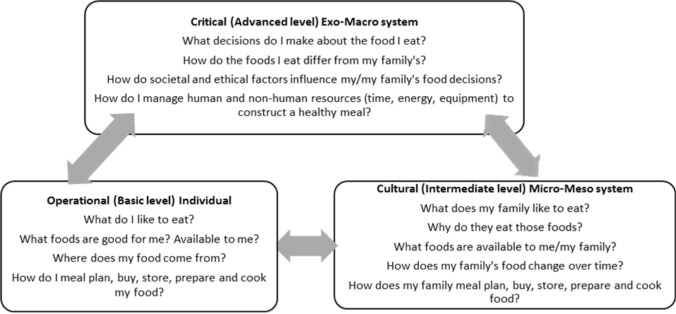Arguably, the widespread use of the term ‘food literacy’ is now firmly ensconced in the home economics education lexicon. Home economics educators and researchers (Pendergast D and Dewhurst Y 2012, Fordyce-Voorham S and Lai Yeung W-L T 2016, Smith MG 2009, Renwick K 2013) and public health researchers (Ronto R et al. 2016b, Ronto R et al. 2016a, Vidgen H and Gallegos D 2014, Burton M et al. 2017, Worsley et al. 2015, Colatruglio S and Slater J 2014) have reported on the link between teaching and developing food literacy skills of students in schools and (often) disadvantaged people of all ages in the community, to improve their healthy eating behaviour. This post provides a brief overview and use of evidence-based models to guide food educators in schools and communities to develop and evaluate their food skill programs. Specifically, a mapping example based on the new VCE Food Studies course is shown how a proposed Food Literacy Model can be applied in the construction and assessment of an educationally rigorous and contemporary food education program in schools.
Read the full text below…
Food Studies_new course_Blog post Fordyce-Voorham_Blog_FoodStudiesCourse
